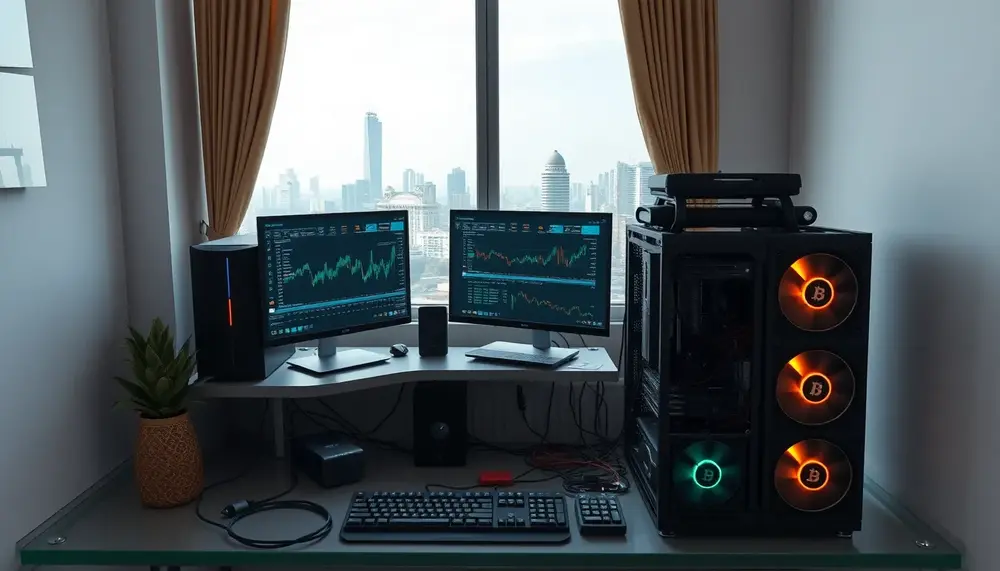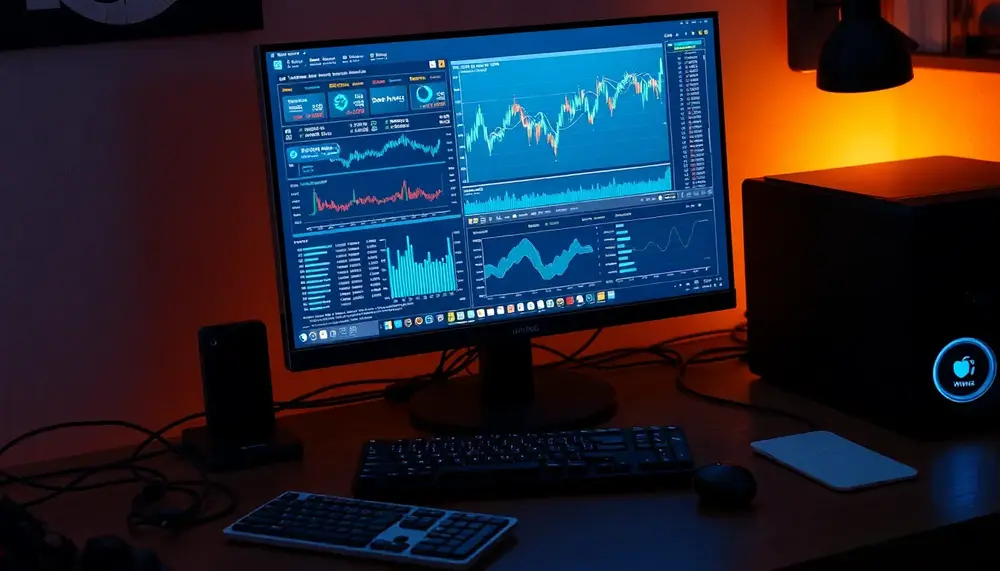R
R
Understanding 'R' in Bitcoin Mining
The term 'R' in the world of Bitcoin Mining refers to the Rate. Often it's specifically about the Hash Rate. This is a significant term and concept, it affects the efficiency and success of Bitcoin Mining. Let's dive in and understand it better.
Hash Rate - The 'R' of Bitcoin Mining
Hash Rate, often abbreviated to 'R', measures the number of calculations that your hardware can perform every second. It is a critical factor in ascertaining the mining power of a rig. It is usually measured in Hashes per second (H/s).
Significance of 'R' in Mining
The hash rate is quintessential in Bitcoin Mining. A higher hash rate means more chances of finding the next block and getting the bitcoin reward. However, a higher 'R' also implies more energy consumption, which can outweigh the benefits if not managed efficiently. Therefore, one must strike a good balance.
Calculating 'R'
An individual Bitcoin miner's 'R' can vary widely depending on the power of their hardware. Factors like the hardware's efficiency, electricity costs, and the current difficulty of mining all play a significant role in the profitability of mining and the 'R' of your setup.
Impact on Bitcoin Network
The combined hash rate ('R') of all Bitcoin miners is a good indicator of the network's health. A high network hash rate means a strong, secure network. Remember, the higher the total 'R', the more difficult it is for a single miner or group to gain control over the network.
Conclusion
Whether you are a novice or an expert in Bitcoin Mining, understanding the 'R' or hash rate is vital. By evaluating your 'R' and how it compares to the wider network, you can optimize your Bitcoin mining operation for greater profits. So, keep an eye on your 'R' and keep mining!
Blog Posts with the term: R

This guide simplifies Monero solo mining with XMRig, covering setup and optimization to mine efficiently. It explains the benefits of using XMRig, necessary hardware requirements, and how to set up a Monero wallet for secure fund management....

Monero mining with CPUs is accessible and cost-effective due to the RandomX algorithm, which optimizes CPU performance over GPUs; top processors include AMD Ryzen 9 3950X and Intel Core i9-10900K. Benchmarking involves measuring hash rates and power consumption using software...

The article discusses the initial investment required for crypto mining in India, emphasizing costs related to hardware, setup, and software. It also highlights key technical specifications needed for mining rigs, such as GPUs and cooling systems, while stressing the importance...

Cloud mining allows individuals to lease processing power from remote data centers for cryptocurrency mining, offering convenience and lower upfront costs but potentially reduced earnings and risks of scams. Hardware mining involves owning equipment with greater control and profit potential...

This guide provides a comprehensive overview of setting up an Ethereum mining rig, covering essential components like GPUs and motherboards, as well as key concepts such as Proof of Work (PoW) and hashrate. By the end, readers will understand how...

A mining pool is a collaborative group of miners who combine their computational resources to increase the likelihood of successfully mining cryptocurrency blocks and sharing rewards, essential due to the high power demands that make solo mining nearly impossible. Setting...

Mining XRP directly is not possible; instead, miners can earn XRP by mining other cryptocurrencies and exchanging them for XRP. This guide covers setting up a secure wallet, choosing the right software like Unmineable or NiceHash, and configuring your mining...

Real USDT mining apps allow users to mine Tether (USDT) directly from their smartphones or computers, offering a simplified and accessible entry point for both beginners and seasoned miners. These apps feature user-friendly interfaces, automated mining options, real-time earnings tracking,...

Bitcoin mining apps can transform your device into a mini mining rig, but with the market flooded by both genuine and dubious options, it's crucial to verify platforms like Google Play for reliability through download numbers, ratings, user reviews, and...

Monero mining on AMD Ryzen CPUs is popular due to their high performance and efficiency; this article provides a guide for optimizing these processors, covering hardware selection, BIOS settings, and software configuration to maximize mining profitability. Key considerations include core...

Bitcoin mining pools are groups of miners who combine their computing power to mine Bitcoin blocks and share the rewards. Joining a mining pool increases the frequency of payouts and reduces the volatility of the mining process, making it a...

This article explores the connection between Bitcoin mining and renewable energy, specifically focusing on solar, wind, and hydropower sources. It highlights the shift towards renewable energy in Bitcoin mining driven by environmental concerns, economic benefits, and advancements in technology. The...

Setting up a mining pool involves configuring the correct URL and port settings to ensure efficient and secure operations, with considerations for cryptocurrency type, geographical location of pools, reputation, fees, supported coins, and security protocols. Understanding commonly used ports like...

Crypto mining on a Mac is possible but requires careful planning due to hardware limitations and software compatibility issues. To optimize performance, choose the right mining software like CGMiner or MacMiner, manage background processes, update your system regularly, and consider...

